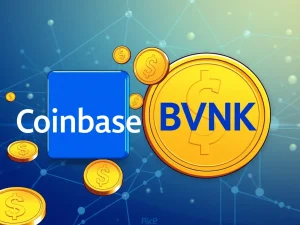Revolutionizing Agriculture: How Stablecoins Empower Farmers and Transform Global Trade

Imagine a world where farmers, the backbone of our global food supply, can effortlessly trade across borders, bypassing outdated financial systems. This isn’t a futuristic fantasy; it’s the burgeoning reality powered by stablecoins in agriculture. Across continents, especially in regions like Africa, farmers are strategically adopting these digital currencies to overcome long-standing financial hurdles and unlock unprecedented opportunities. Let’s delve into how this transformative shift is reshaping the agricultural landscape and why it matters to everyone.
Unlocking Global Markets: The Power of Stablecoins for Farmers
Food is fundamental. The agricultural industry is a colossal global market, with the European Union alone importing and exporting hundreds of millions of tonnes of produce annually. This vast market, projected to reach a staggering $5.52 trillion by 2029, is ripe for innovation. Yet, farmers, particularly small-scale operators, face significant challenges when engaging in international trade. Traditional financial systems, especially in developing regions, impose hefty transaction costs, lengthy delays, and restricted access to global markets. This is where stablecoins in agriculture emerge as a powerful solution.
The Pain Points of Traditional Agricultural Finance:
- High Transaction Fees: Banks often levy fees between 3% and 6% for cross-border payments, significantly eroding already thin profit margins for farmers.
- Exchange Rate Losses: The reliance on intermediary currencies like the US dollar leads to further losses, ranging from 3% to 10%, due to fluctuating exchange rates.
- Payment Delays: Farmers can wait up to 120 days for settlements, causing severe cash flow issues and forcing them to resort to high-interest loans.
- Limited Access for Smallholders: Smaller farms often bear a disproportionately higher burden compared to large corporations when navigating these financial complexities.
Stablecoins: A Revolutionary Solution for Agricultural Trade
Crypto for farmers, specifically in the form of stablecoins, offers a beacon of hope. These digital currencies, pegged to stable assets like the US dollar, provide a pathway to bypass the inefficiencies of traditional banking. How exactly do stablecoins in agriculture address these critical issues?
Three Pillars of Transformation:
- Reduced Costs and Instant Transactions: By eliminating intermediaries, stablecoins slash transaction fees by 3%-6% per payment. Furthermore, transactions are near-instantaneous, settling in minutes instead of weeks or months. This rapid access to working capital is vital for the survival and growth of agricultural businesses.
- Access to Global Markets and Stable Pricing: Farmers can price their goods in stablecoins, mitigating the risks associated with volatile local currencies. This opens doors to global markets, especially for those in countries prone to currency devaluation. Imagine a Zimbabwean farmer able to confidently trade internationally without the constant worry of currency fluctuations wiping out their earnings.
- Enhanced Efficiency and Reduced Fraud: The inherent transparency and security of blockchain technology, underpinning stablecoins, can significantly reduce fraud and improve supply chain efficiency. With global food fraud costing billions annually, and counterfeit goods rampant, stablecoins offer a robust mechanism to track and secure agricultural supply chains.
Africa Leading the Charge: Real-World Examples of Stablecoin Adoption
Africa, with its burgeoning agricultural market projected to reach $1 trillion by 2030, is witnessing tangible progress in blockchain agriculture. Companies are actively embracing stablecoins to streamline operations and empower farmers.
Take Parrogate, a Zimbabwe-based conglomerate, for example. They are committed to leveraging blockchain to expedite payments to their suppliers and enhance cross-border trade efficiency. Parrogate is just one of a growing number of African businesses recognizing the transformative potential of stablecoins in the agricultural sector.
Navigating the Road Ahead: Challenges and Opportunities
While the promise of stablecoins in agriculture is immense, some hurdles need to be addressed to ensure widespread adoption.
Key Challenges:
- Regulatory Uncertainty: Ambiguous or restrictive regulations, particularly in Africa, pose a significant challenge. Strict capital outflow controls in many nations necessitate compliance with local laws, which can be complex and vary widely.
- Technological Barriers and Education Gap: A lack of technological literacy and understanding of stablecoins within the agricultural community can hinder adoption. Education and accessible technology are crucial to bridge this gap.
- Infrastructure Disparities: While European farmers may have less immediate need due to established financial infrastructure, ensuring global accessibility and interoperability of stablecoin solutions is vital for worldwide impact.
Overcoming Obstacles and Embracing the Future:
Despite these challenges, the demand for crypto for farmers and stablecoins in agriculture is undeniable. There’s a palpable eagerness within the agricultural community to embrace compliant stablecoin solutions that facilitate seamless cross-border liquidity. Mass adoption may not be instantaneous, but the agricultural industry is undoubtedly progressing towards a digital future.
The Inevitable Evolution: Why Stablecoins are Essential for Agriculture
The tantalizing offer of instant transactions, lower fees, and enhanced financial access through stablecoins is compelling. It’s not a question of if, but when, more farmers will make the switch. Agricultural traders, burdened by outdated and inefficient banking systems, are primed for greater financial inclusion. And we should all welcome this evolution.
The agricultural industry connects us all, providing the fundamental necessity of food. Stablecoins are not merely an innovation in this sector; they represent an essential evolution, poised to uplift and transform the field, ensuring a more efficient, equitable, and sustainable future for global agriculture. This is more than just a financial trend; it’s a fundamental shift that will benefit farmers, consumers, and the entire global food system.
Opinion by: Henry Duckworth, founder and CEO of AgriDex. This article is for general information purposes and is not intended to be and should not be taken as legal or investment advice. The views, thoughts, and opinions expressed here are the author’s alone and do not necessarily reflect or represent the views and opinions of Crypto News Insights. #Blockchain #Altcoin #Africa #Payments #Adoption #Agriculture #Stablecoin







